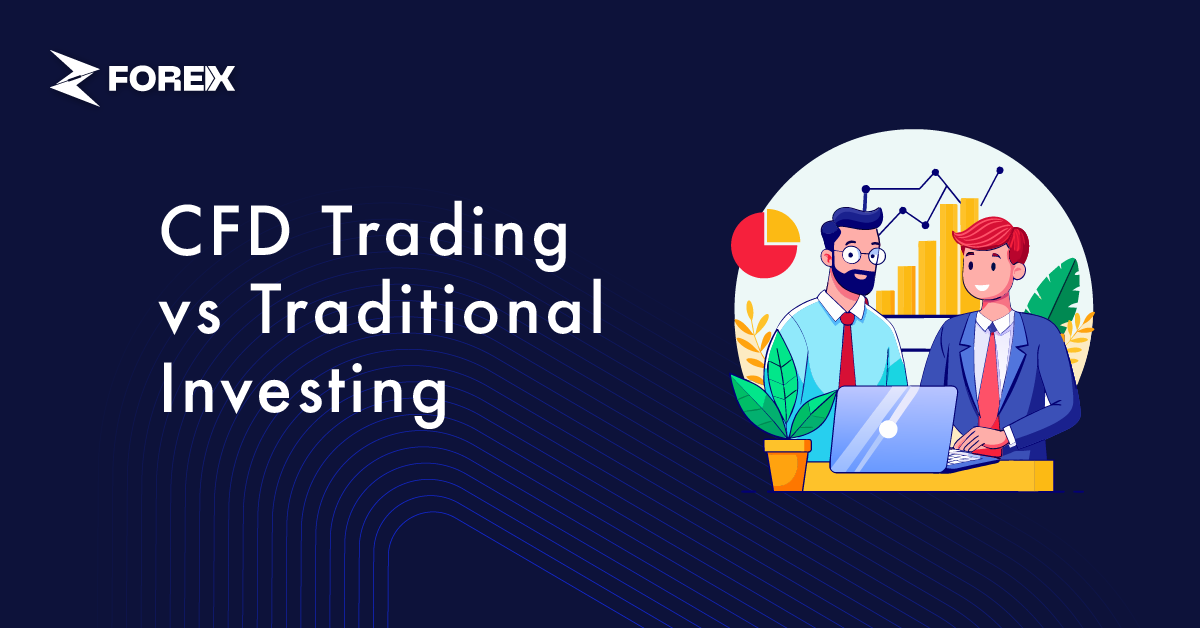
The investment world offers different venues for profit generation, ranging from established equities to emerging derivatives. Although traditional stock investments have remained popular for a long time, investments that we call CFD (Contracts for Difference) have also become increasingly preferred among investors in recent years.
In this article, we will take a look at the main differences between CFD trading and stock investment, the advantages of both approaches, and ultimately how to choose between the two methods.
CFDs, also known as "Contracts for Difference", are a type of investment that aims to gain profit from changes in the price of an asset. Instead of physically purchasing an asset, the investor opens a position based on the upward or downward movement of the asset's price and looks for a way to make a profit on the difference.
In CFD investment, it is possible to invest in various asset classes such as stocks, commodities, foreign currencies, or cryptocurrencies.
Traditional investing is when an investor directly purchases physical assets such as stocks, bonds, or commodities and gains from the increase in value or dividend payments of these assets. This type of investment is generally considered a longer-term strategy.
CFD and traditional investing have different characteristics in terms of how investors earn profits and manage risks. These differences can directly affect an investor's strategies and goals. Below, we addressed some of these differences in more detail.
CFD and traditional investing each present unique advantages for investors. To help you decide which approach aligns better with your goals and risk tolerance, let's explore the key benefits offered by both investment types.
Thanks to leverage in forex and CFD trading, investors can open large positions with a small capital. Although this increases risk, it creates an attractive opportunity for investors looking for quick profits, especially in the short term.
In CFD transactions, investors can make profits not only from rising markets but also from falling ones by opening short positions when prices drop.
Trading platforms provide access to various asset classes such as foreign exchange, commodities, stocks, cryptocurrencies, and indices, enabling easy portfolio diversification.
CFD investments allow entry to the market with low capital. Investors can open large positions with small amounts, making market entry more accessible.
CFD is ideal for short-term trading and speculation. By reacting quickly to price movements, gains can be achieved in a short time.
In traditional investing, an investor physically owns assets such as stocks, bonds, or commodities. This is a major advantage, especially with stocks that offer additional income sources like dividend payments.
Traditional investments are typically less risky since they do not involve leverage. Investors only risk the capital they have invested.
In traditional investment, there are significant earning opportunities with the long-term appreciation of assets. Stocks, for example, can provide considerable returns to investors as their value increases over time.
Traditional investment offers passive income through dividends (for stocks) and interest payments (for bonds), making them appealing for long-term investment strategies.
Traditional investments are suitable for investors seeking long-term stability and security. Despite market fluctuations, assets tend to appreciate over time.
The decision between CFD and traditional investment depends entirely on the investor's goals, risk tolerance, and strategies.
CFD investments are suitable for shorter-term, higher-risk, and speculative trading, while traditional investment is often regarded as a long-term, lower-risk, and safer option.
Understanding both strategies thoroughly and choosing the one that best fits your preferences is the key to building a successful investment strategy.
How does CFD trading make a profit in falling markets?
In CFD trading, investors can open short positions, allowing them to profit from price drops by predicting a decline in the market.
Why is traditional investing considered less risky than CFD trading?
Traditional investing is generally less risky because it usually does not involve leverage, and investors only risk the capital they invest without borrowing additional funds.
What are the typical costs associated with CFD trading?
CFD transaction costs usually include overnight trading fees based on the spread (the difference between buying and selling prices) and may not include commission fees. In this sense, CFD trading can provide a cost advantage.
How does liquidity differ between CFD trading and traditional investing?
CFD trading usually offers higher liquidity, allowing investors to trade at any time during market hours, while traditional investing may vary in liquidity depending on the specific asset.
What should investors pay attention to when choosing between CFD and traditional investing?
Investors should consider their financial goals, risk tolerance, investment horizon, and whether they prefer short-term trading opportunities or long-term asset appreciation when choosing between the two methods.
Is traditional investing better for long-term gains?
Yes, traditional investing is generally considered better for long-term gains because assets such as stocks can increase in value over time, and investors can also earn dividends or interest income.
 QuickTrade in cTrader: How to Place Trades Faster
QuickTrade in cTrader: How to Place Trades Faster
QuickTrade is a built-in cTrader feature that allows you to place trades directly from the chart, without opening the full order ticket.
Detail A Practical Guide to cBots on cTrader
A Practical Guide to cBots on cTrader
Discover cBots in the cTrader ecosystem, how they are added and used through cTrader Algo, and what to pay attention to when selecting a strategy.
Detail cTrader Shortcuts: 15 Tips to Upgrade Your Experience
cTrader Shortcuts: 15 Tips to Upgrade Your Experience
This guide highlights 15 practical shortcuts and settings that upgrade your cTrader experience.
DetailThen Join Our Telegram Channel and Subscribe Our Trading Signals Newsletter for Free!
Join Us On Telegram!